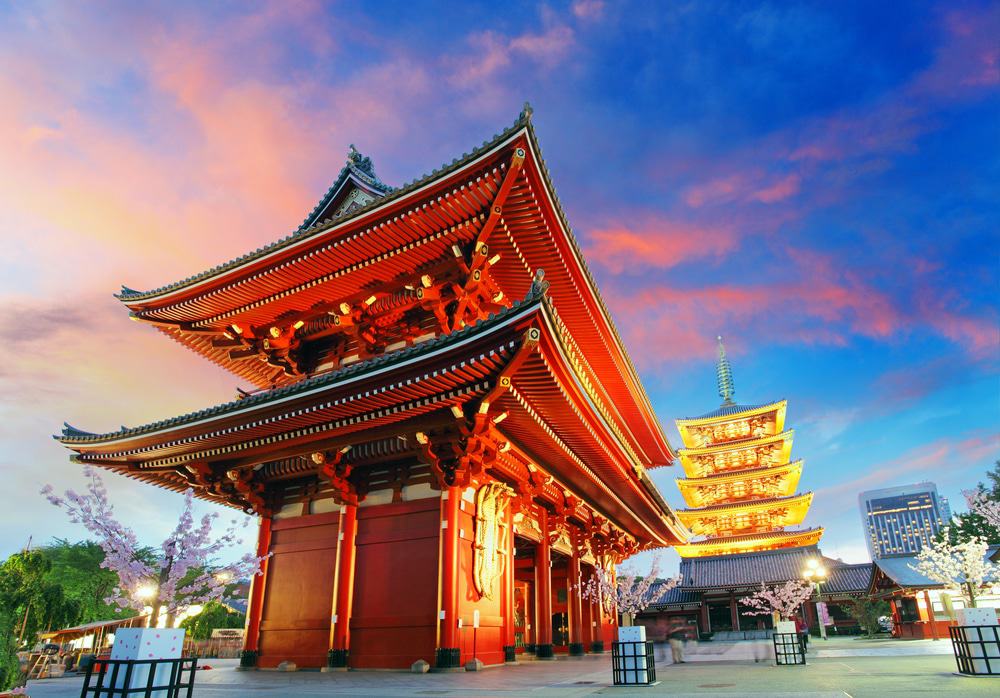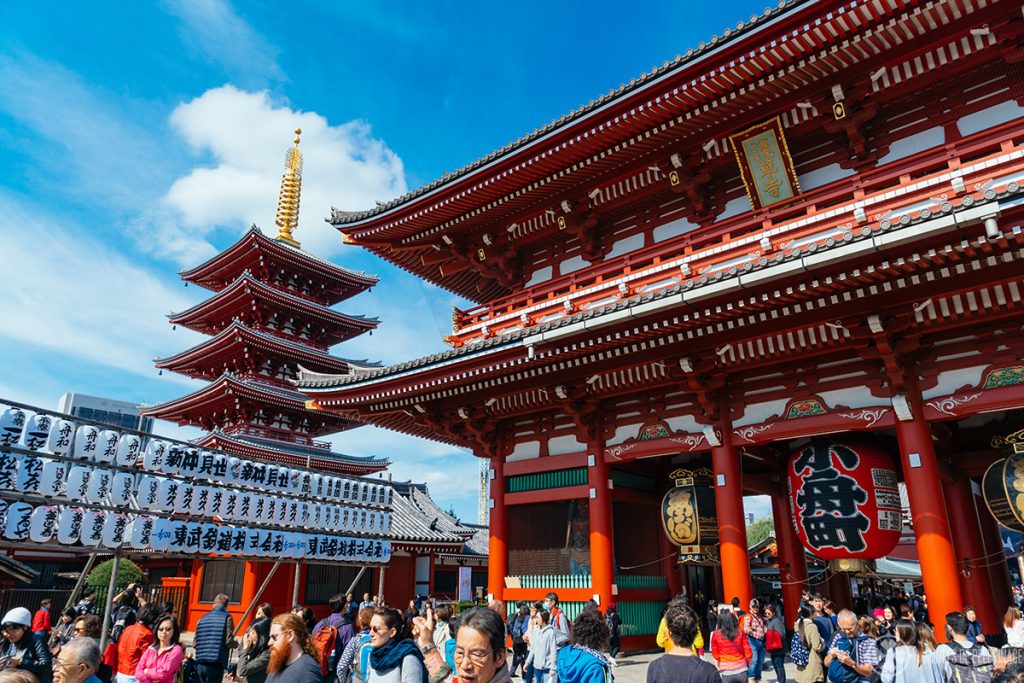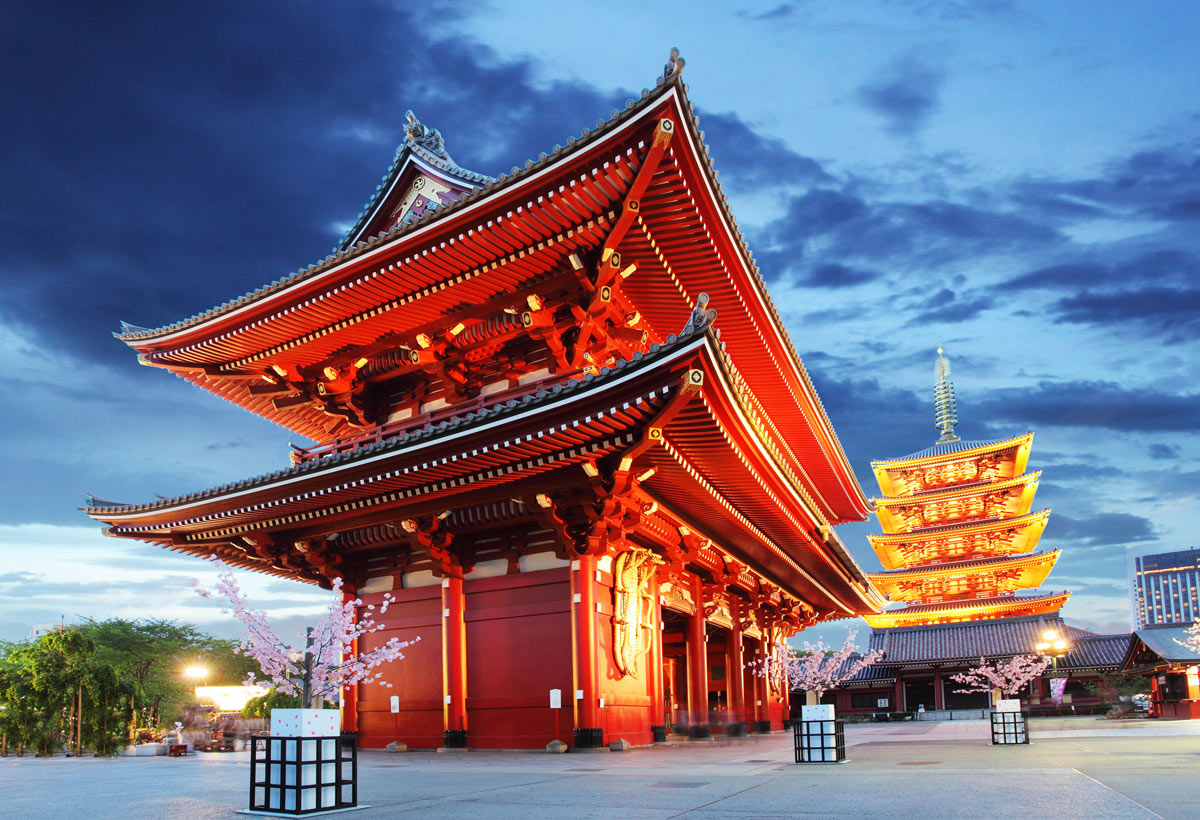
Tokyo. The very name conjures images of neon-lit skyscrapers, bustling Shibuya crossings, ancient temples, and serene gardens. It’s a city that effortlessly blends the hyper-modern with deeply rooted traditions, creating a destination unlike any other. For first-time visitors and seasoned explorers alike, Tokyo offers an inexhaustible list of experiences, a vibrant energy that capt’s the soul, and a hospitality that warms the heart. This comprehensive guide will navigate you through the best of Tokyo, covering its storied past, must-see attractions, practical travel advice, and everything you need to plan your perfect Japanese adventure.
A Glimpse into Tokyo’s Rich History: From Edo to Metropolis
To truly appreciate modern Tokyo, one must understand its fascinating evolution. The city we know today was originally a small fishing village called Edo. Its fortunes changed dramatically in 1603 when Tokugawa Ieyasu established his shogunate here, making Edo the de facto political and military capital of Japan, even though the emperor resided in Kyoto. For over 250 years, the Edo period flourished under the Tokugawa shoguns, characterized by peace, prosperity, and the development of a unique urban culture, including the rise of samurai, geisha, and vibrant commoner districts.

Related Articles about Tokyo: A Tapestry of Tradition and Tomorrow – Your Ultimate Guide to an Unforgettable Journey:
- Lebanon: A Tapestry of Time, Taste, and Terracotta Dreams
- España: A Tapestry of Sun, Sangria, and Centuries of Stories – Your Ultimate Travel Guide
- Kenya: A Tapestry of Wildlife, Culture, and Breathtaking Landscapes
- Santiago: A Vibrant Tapestry of History, Culture, and Adventure in the Heart of Chile
- Seoul: A City Where Ancient Traditions Dance with Futuristic Visions
The Edo period came to an end in 1868 with the Meiji Restoration, a pivotal moment that saw the emperor’s power restored and Japan open its doors to the world. Edo was renamed Tokyo (meaning "Eastern Capital"), and the Imperial Palace became the emperor’s primary residence. The city rapidly modernized, embracing Western technologies and ideas, transforming into a global metropolis.
However, Tokyo’s journey wasn’t without hardship. The Great Kanto Earthquake of 1923 devastated much of the city, followed by the catastrophic firebombing raids during World War II, which left Tokyo in ruins. Yet, with remarkable resilience and an unwavering spirit, the city rebuilt itself with astonishing speed, emerging stronger and more innovative than ever. Today, Tokyo stands as a testament to human ingenuity and perseverance, a city that respects its past while relentlessly forging into the future.
Tokyo’s Iconic Attractions: A Journey Through Diversity
Tokyo’s attractions are as diverse as its history, offering something for every interest. From ancient spiritual sites to futuristic entertainment hubs, prepare to be captivated.
1. Cultural & Historical Landmarks:
- Senso-ji Temple (Asakusa): Tokyo’s oldest temple, founded in 628 AD, is a must-visit. The vibrant Nakamise-dori shopping street leading up to the main hall is packed with traditional snacks and souvenirs. Visit early morning or late evening to avoid the largest crowds and experience a more serene atmosphere.
- Meiji Jingu Shrine (Shibuya): Dedicated to Emperor Meiji and Empress Shoken, this serene Shinto shrine offers a tranquil escape from the bustling city. Walk through the giant torii gates, past sake barrel offerings, into a lush forest that feels worlds away from the urban sprawl.
- Imperial Palace East Garden (Chiyoda): The former site of Edo Castle, this beautiful public garden is part of the Imperial Palace grounds. While the palace itself is mostly closed to the public, the East Garden offers a glimpse into its history with remnants of the old castle walls and moats, alongside meticulously maintained landscapes.
- Tokyo National Museum (Ueno Park): Japan’s largest and oldest museum houses an unparalleled collection of Japanese art and antiquities, from ancient pottery to samurai swords and traditional kimonos. It’s an essential stop for anyone interested in Japanese culture.

2. Modern Marvels & Urban Landscapes:
- Shibuya Crossing (Shibuya): The world’s busiest intersection is a quintessential Tokyo experience. Stand at the Hachiko exit of Shibuya Station and witness the organized chaos as thousands of pedestrians cross simultaneously. It’s an iconic photo opportunity and a symbol of Tokyo’s relentless energy.
- Tokyo Skytree (Sumida): Soaring to 634 meters, this broadcasting and observation tower offers breathtaking panoramic views of the city on a clear day, stretching as far as Mount Fuji. The two observation decks provide unparalleled vistas, especially stunning at sunset.
- Tokyo Tower (Minato): Inspired by the Eiffel Tower, Tokyo Tower has been an iconic landmark since 1958. While no longer the tallest, its distinctive red and white lattice structure and two observation decks offer a classic perspective of Tokyo’s urban sprawl, particularly mesmerizing when illuminated at night.
- Shinjuku Gyoen National Garden (Shinjuku): This sprawling oasis combines traditional Japanese, French, and English landscape gardens. It’s a perfect spot for a leisurely stroll, a picnic, or to admire cherry blossoms in spring or autumn foliage.
- Akihabara Electric Town (Chiyoda): The epicenter of anime, manga, video games, and electronics. Dive into multi-story arcades, browse countless shops selling collectibles, and experience the vibrant subculture that defines this unique district.
- Harajuku (Shibuya): Known for its vibrant street fashion, quirky boutiques, and Takeshita Street, Harajuku is a hub of youth culture. Explore the unique shops, grab a famous Harajuku crepe, and witness the ever-evolving styles of Tokyo’s trendsetters.
- Ginza (Chuo): Tokyo’s most famous upscale shopping district, home to luxury boutiques, department stores, and high-end restaurants. Even if shopping isn’t your primary goal, a stroll through Ginza showcases Tokyo’s sophisticated side.
3. Unique Experiences:
- Tsukiji Outer Market (Chuo): While the famous inner fish market moved to Toyosu, the Tsukiji Outer Market remains a bustling hub of vendors selling fresh seafood, produce, kitchenware, and delicious street food. It’s a fantastic place to sample local delicacies.
- Ghibli Museum (Mitaka): For fans of Studio Ghibli’s animated masterpieces (My Neighbor Totoro, Spirited Away), this whimsical museum is a dream come true. Tickets must be purchased well in advance (often months) as they sell out quickly.
- Robot Restaurant (Shinjuku): A bizarre, loud, and unforgettable cabaret show featuring giant robots, dancers, and dazzling light displays. It’s a sensory overload that perfectly encapsulates Tokyo’s eccentric side. (Note: currently closed, check for reopening).
- Golden Gai (Shinjuku): A tiny district packed with over 200 miniature bars, each with its own unique character. It’s a fantastic place for a drink and to mingle with locals and fellow travelers, though some bars cater exclusively to regulars.
Navigating the Labyrinth: Transportation in Tokyo
Tokyo’s public transportation system is a marvel of efficiency, punctuality, and cleanliness. It’s the most effective way to get around the sprawling metropolis.
- Trains & Subways: The backbone of Tokyo’s transport are the JR (Japan Railways) lines and the extensive subway network (Tokyo Metro and Toei Subway). These systems are incredibly efficient, with trains running every few minutes during peak hours.
- JR Yamanote Line: This circular line is incredibly useful for tourists, connecting major hubs like Shinjuku, Shibuya, Ueno, Tokyo Station, and Akihabara.
- IC Cards (Suica/Pasmo): Purchase a rechargeable IC card (Suica or Pasmo) upon arrival. These contactless cards work on virtually all trains, subways, and buses, saving you the hassle of buying individual tickets and even work at convenience stores and vending machines.
- Buses: While less frequently used by tourists due to the extensive rail network, buses can be useful for reaching specific neighborhoods or attractions not directly served by trains.
- Taxis: Taxis are abundant but significantly more expensive than public transport. They are best reserved for late-night travel when trains have stopped, or if you’re traveling with heavy luggage.
- Walking: Many districts are best explored on foot. Wear comfortable shoes, as you’ll be doing a lot of walking between stations and attractions.
- Airport Transfers:
- Narita International Airport (NRT): The Narita Express (N’EX) and Keisei Skyliner are the fastest and most comfortable options to central Tokyo. Limousine buses are also available.
- Haneda Airport (HND): Closer to the city center, Haneda is easily accessible via the Keikyu Line or Tokyo Monorail.
Where to Rest Your Head: Accommodation Options
Tokyo offers a vast array of accommodation, catering to every budget and travel style. Choosing the right neighborhood can significantly impact your experience.
- Luxury (¥40,000+): Districts like Shinjuku, Ginza, and Marunouchi boast world-class hotels with impeccable service, stunning views, and top-tier amenities. Think Park Hyatt Tokyo, Mandarin Oriental, or the Imperial Hotel.
- Mid-Range (¥15,000 – ¥40,000): You’ll find excellent mid-range options in areas like Shibuya, Ueno, Shinagawa, and Ikebukuro. These offer comfortable rooms, good service, and convenient access to public transport without breaking the bank. Business hotels (like APA Hotel, Toyoko Inn) offer compact but efficient rooms.
- Budget (under ¥15,000): Tokyo has a thriving budget accommodation scene. Look for hostels with dorms or private rooms in areas like Asakusa, Ueno, and Taito. Capsule hotels offer a unique and affordable experience, providing a compact sleeping pod with shared facilities. Airbnbs are also an option, though be aware of stricter regulations in Japan.
- Ryokan (Traditional Japanese Inn): For a truly authentic experience, consider staying in a ryokan. While more common outside Tokyo, some exist within the city or just on its outskirts (e.g., Hakone or Nikko are popular day trips). They offer tatami mat rooms, futon bedding, communal baths (onsen), and traditional Japanese meals.
Tips for Booking:
- Book well in advance, especially during peak seasons (cherry blossom, autumn foliage).
- Consider proximity to a major train or subway station for convenience.
- Read reviews carefully, paying attention to room size and amenities.
Timing Your Trip: Best Time to Visit Tokyo
Tokyo offers something special in every season, but certain times of the year are particularly popular.
- Spring (March – May): Pros: Mild temperatures, clear skies, and most famously, the breathtaking cherry blossoms (sakura), usually peaking in late March to early April. Cons: Extremely popular, leading to higher prices for flights and accommodation, and larger crowds at major attractions.
- Summer (June – August): Pros: Vibrant festivals (matsuri) and fireworks displays (hanabi). Cons: Hot and humid, with the rainy season (tsuyu) typically lasting from mid-June to mid-July.
- Autumn (September – November): Pros: Pleasant, crisp temperatures, and stunning autumn foliage (koyo), which usually peaks in late November to early December. Fewer crowds than spring, making it an excellent time to visit. Cons: Can still experience typhoons in early September.
- Winter (December – February): Pros: Cold but often sunny and dry, with excellent visibility for views of Mount Fuji. Beautiful winter illuminations transform the city into a sparkling wonderland. Fewer tourists mean less crowded attractions. Cons: Cold temperatures, especially in January and February.
Overall Recommendation: Spring (late March/early April) for cherry blossoms or Autumn (October/November) for comfortable weather and beautiful foliage are generally considered the best times to visit.
Essential Travel Tips for a Smooth Journey
To make your Tokyo adventure as seamless as possible, keep these tips in mind:
- Connectivity: Rent a pocket Wi-Fi device or purchase a local SIM card upon arrival. Wi-Fi hotspots are available but can be inconsistent. Google Maps will be your best friend.
- Cash vs. Card: While major department stores and hotels accept credit cards, many smaller shops, restaurants, and particularly vending machines and some temples, are cash-only. Always carry some yen. ATMs are widely available, especially at convenience stores (7-Eleven, FamilyMart, Lawson).
- Etiquette:
- Bowing: A common form of greeting and showing respect. A slight nod is usually sufficient for tourists.
- No Tipping: Tipping is not customary and can even be considered rude.
- Shoes Off: Remove your shoes when entering homes, some traditional restaurants, temples, and fitting rooms. Look for a shoe rack or slippers.
- Quiet on Public Transport: Avoid loud conversations or phone calls on trains and subways.
- Queuing: Always queue politely and patiently.
- Waste Disposal: Public trash cans are rare. Carry a small bag for your trash until you find a bin (often at convenience stores or train stations).
- Language: While many people in tourist areas speak English, learning a few basic Japanese phrases like "Arigato" (thank you), "Sumimasen" (excuse me/sorry), and "Konnichiwa" (hello) can go a long way in showing respect and enhancing your interactions. Google Translate with its camera function is also an invaluable tool.
- Safety: Tokyo is one of the safest cities in the world. You can generally feel comfortable walking around at any time of day or night.
- Planning: Many popular attractions, like the Ghibli Museum or specific restaurant reservations, require booking well in advance.
- Comfortable Shoes: You will be doing a lot of walking, so prioritize comfortable footwear.
- Adaptor: Japan uses Type A and B plugs, with a voltage of 100V. You’ll likely need a travel adapter for your electronics.
Conclusion: Your Tokyo Adventure Awaits
Tokyo is a city that defies easy categorization. It’s ancient and futuristic, serene and frenetic, deeply traditional and boldly innovative. It’s a place where you can witness a centuries-old tea ceremony in the morning and dine in a robot-themed restaurant by night. Whether you’re drawn to its historical temples, its cutting-edge fashion, its culinary delights, or its unparalleled efficiency, Tokyo promises an adventure that will stimulate all your senses and leave an indelible mark on your memory. So pack your bags, prepare for an exhilarating journey, and get ready to discover the magic of this extraordinary metropolis. Your Tokyo story is waiting to be written.





